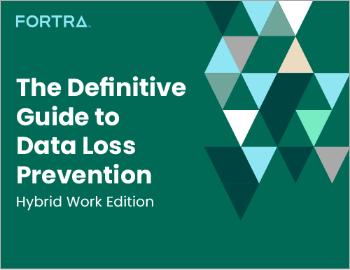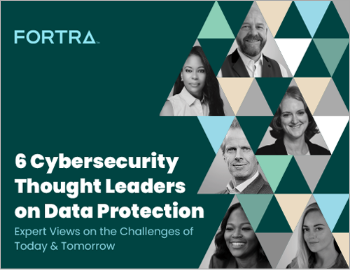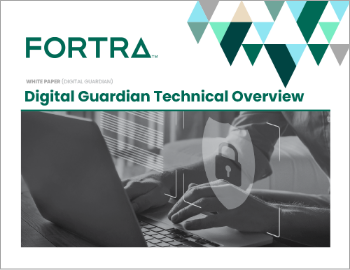Personal Identifiable Information (PII): Tips & Strategies
| Contact Us | |
| Free Demo | |
| Chat | |
Personal Identifiable Information (PII) is any information that can be used to identify a specific individual. Learn more in this week's blog.
As the line between our online and real-world identities continues to blur, the strategies for safeguarding our personal information must constantly evolve.
Therefore, your company’s policies and procedures must continuously change in lockstep with the advanced persistent threats cybercriminals device to steal customers' PII.
What Is Personal Identifiable Information (PII)?
Personal Identifiable Information (PII) is any information that can be used to identify a specific individual. This could range from directly identifiable information such as a person's name, social security number, or driver's license number to indirect identifiers such as a combination of gender, date of birth, and postcode.
PII may also include data like an IP address or a cookie ID if it can be used to identify an individual. Various privacy and data protection laws worldwide govern PII handling, storage, and protection.
What Qualifies as Personal Identifiable Information (PII)?
Personal Identifiable Information (PII) refers to any information that can be used to identify a particular individual. This covers a broad range of data, such as:
- Full Name (if it's not common).
- Home and Email Address.
- National Identification Numbers like Social Security Numbers in the US.
- All forms of identification numbers like Driver’s License or Passport numbers.
- Personal Characteristics: Includes photographic images (particularly of the face), fingerprints, or handwriting.
- Credit Card Numbers.
- Date of Birth.
- Telephone Number.
- Bank Account Numbers.
- Digital Identity: includes an IP address, Login ID, screen names, or other personal identifiers for online activities.
- Vehicle Identification Number.
It's important to note that definitions and classifications may vary by jurisdiction depending on the local data protection and privacy laws.
Sensitive PII, a subcategory of direct identifiers, includes data that, if exposed, could lead to severe privacy implications such as financial loss, discrimination, or harm to an individual’s reputation. Examples might include medical records, biometric data, financial account numbers, and Social Security numbers.
Examples of Personal Identifiable Information (PII)
Examples of Personally Identifiable Information (PII) include:
- Full Name: If it's not a common name, it can easily be used to identify someone.
- Social Security Number: This is a unique number assigned to each individual in the United States.
- Driver’s License Number or Passport Number: These unique identifiers are often used in identity verification processes.
- Home or Mailing Address: This information, especially when combined with the name, can be used to locate a person physically.
- Personal Phone Number: This can be used to contact or impersonate an individual.
- Email Address: This especially applies to private email addresses as they often contain names or other identifying information.
- Bank Account Numbers or Credit Card Numbers: This financial information can be used for identity theft or financial fraud.
- Date of Birth: This information can be combined with other data to identify someone.
- Medical Records: These often contain various PII, including name, address, and more sensitive data like genetic information or mental health history.
- Biometric Records: These could include fingerprints, face or voice recognition data, DNA data, or other unique biological information.
- Employment Information: could include an employer's name, job title, or other occupational details.
- Educational Records: This might include information about the schools an individual has attended, their major, grades, or other educational data.
The Importance of Securing Personal Identifiable Information (PII)
- Prevention of Identity Theft: Criminals can use PII, such as Social Security numbers, bank account details, or credit card numbers, to impersonate an individual, leading to identity theft. By securing PII, we can prevent this kind of crime.
- Maintaining Privacy: Secure handling of PII helps safeguard an individual's privacy. People have the right to keep personal details private and share them on a need-to-know basis.
- Avoiding Financial Losses: Breaches of PII can lead to significant financial losses, both for individuals whose bank accounts may be drained and for organizations that could face penalties and loss of business.
- Compliance with Laws and Regulations: Many jurisdictions require organizations to protect PII to avoid stiff penalties and legal actions. For example, the GDPR in the EU can fine companies up to 4% of their annual global turnover for breaching data protection rules.
- Maintaining Trust and Reputation: Businesses must secure their customers' PII to earn and maintain their trust. A company that protects PII will likely have a better reputation than one that has suffered multiple data breaches.
- Avoiding Disruption of Operations: A breach of PII can halt operations, especially if a significant system overhaul must be implemented to prevent further breaches.
- Personal Safety: In some cases, leaked PII can lead to safety concerns. For example, if home addresses or personal medical information falls into the wrong hands, it can be used for nefarious purposes that endanger lives.
How Cybercriminals Steal Personal Identifiable Information (PII)?
Cybercriminals utilize several methods to steal Personally Identifiable Information (PII). Here are a few common tactics:
- Phishing: Cybercriminals often send emails that appear to come from legitimate sources, such as banks or social media sites, to get victims to reveal personal information.
- Malware: This software is designed to access a computer system secretly without the owner's knowledge. Malware like trojans, ransomware, spyware, etc., can steal PII, often by logging keystrokes or capturing screenshots.
- Social Engineering: This involves manipulating individuals into sharing their PII. This can be done via phone, email, or even in person.
- Data Breaches occur when hackers break into a company's system to steal PII data stored in databases. They might exploit the company’s security or data vulnerabilities or use stolen login credentials.
- Physical Theft: Traditional methods such as stealing wallets, mail, or electronic devices can give criminals access to a wealth of PII.
- Skimming: Here, a small device is used to steal credit card information during an otherwise legitimate transaction. They are often installed on ATMs or point-of-sale terminals.
- Session Hijacking: Attackers exploit a valid computer session to gain unauthorized access to PII. This can happen in unsecured public Wi-Fi networks where login sessions are not encrypted.
- Man-in-the-middle attacks: In these attacks, a criminal intercepts communication between two parties to steal data, often by impersonating one of the parties.
How to Protect Personal Identifiable Information (PII) and Reduce Risk?
- Minimize Data Collection: Only collect PII data necessary for your business. It's always best to keep less data and thus decrease harm from possible data breaches.
- Encrypt Your Data: Encrypting your data adds an extra layer of defense, making it more difficult for unauthorized users to access it.
- Use Strong Passwords: Implement a strong password policy. Using a combination of numbers, letters, and special characters for your password can do a lot to protect sensitive information.
- Use Two-Factor Authentication (2FA): 2FA adds an additional layer of security on top of username/password.
- Regularly Update Your Systems: Keep all your systems, software, and applications up-to-date to avoid vulnerabilities that hackers could exploit.
- Train Employees: Regularly train and educate your employees about the importance of PII protection and how to identify and avoid phishing scams and other threats.
- Limit Access: Not every employee in your organization needs access to every piece of data. Ensure access to sensitive data is limited and controlled.
- Regularly Monitor and Audit Your Systems: Regularly check your systems for any unauthorized access or suspicious activity.
- Have a Response Plan: In case of a breach, have a plan that outlines the steps to contain the incident and limit the damage.
- Engage Cybersecurity Experts: Hiring a cybersecurity expert or firm can help protect PII and limit overall risk. They have the knowledge and experience to handle cybersecurity issues adequately.
- Legal Compliance: Ensure your data handling and processing comply with the relevant laws and regulations like GDPR or California's CCPA.
What are the Best Practices for Working with Personal Identifiable Information (PII)?
- Minimize Data Collection: Only collect PII necessary for your business tasks. Limiting the amount of PII you collect reduces the risk of a data breach and complies with data minimization principles found in many privacy laws.
- Implement Strong Access Controls: Ensure only authorized personnel can access PII. This can be achieved through unique user account credentials, multi-factor authentication, and robust user access controls.
- Encrypt data: When storing or transmitting PII, ensure it is encrypted. This way, even if the data is intercepted or breached, it would be incomprehensible and useless to the cybercriminals.
- Regularly Update and Patch Systems: Keep systems, applications, and networks updated and patched. Cybercriminals often exploit known vulnerabilities in outdated systems to gain unauthorized access.
- Employee Training: Regular training of employees to recognize phishing attempts, avoid unsafe internet practices, and understand the importance of PII protection can significantly reduce the risk of human error leading to a data breach.
- Regular Backups: Regularly back up your data so that you can restore it without significant loss in the event of a ransomware attack or technical failure.
- Monitor for Breaches: Regularly monitor and conduct audits of your systems to detect any data breaches quickly. Early detection can minimize the impact of a breach.
- Develop a response plan: Have a plan of action for when a breach occurs. This should include steps to secure your systems and notify affected individuals and regulatory bodies when necessary.
- Comply with regulations: Ensure data compliance with all relevant privacy laws and regulations, such as GDPR, CCPA, HIPAA, etc, which have specific rules about how PII should be handled.
- Dispose of PII properly: When you no longer need to store certain PII, dispose of it securely. This could mean shredding physical files or permanently erasing digital ones.
Why You Should Allow Digital Guardian to Protect Your PII
Digital Guardian understands securing PII is essential for mitigating risks ranging from identity theft and financial loss to regulatory penalties and reputational damage.
We are equipped to protect your PII, including proprietary and confidential information, throughout the data lifecycle, whether at rest or in transit.
Contact us today to learn more about our PII protection strategies.
Recommended Resources

All the essential information you need about DLP in one eBook.

Expert views on the challenges of today & tomorrow.

The details on our platform architecture, how it works, and your deployment options.
Don't Fall Behind
Get the latest security insights
delivered to your inbox each week.
Thank you for subscribing!
